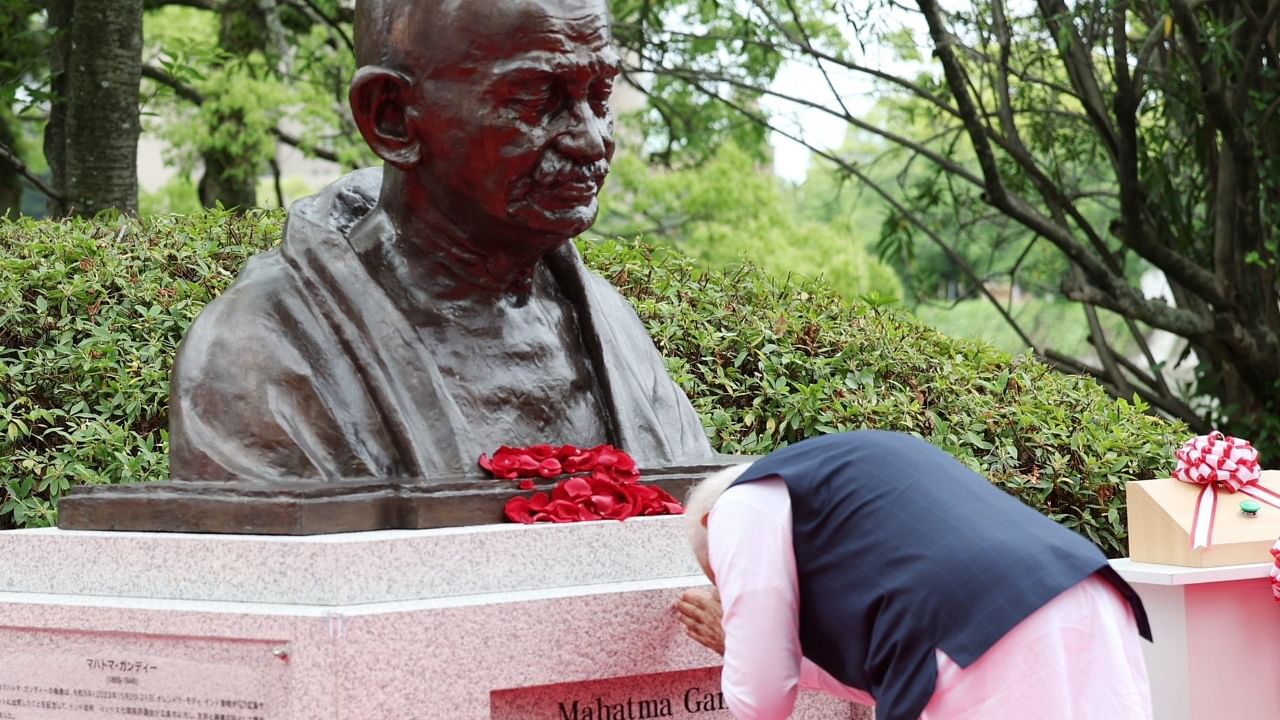
Prime Minister Narendra Modi on Saturday unveiled a bust of Mahatma Gandhi in Hiroshima, where the nuclear weapon’s power was unleashed for the first time.
“This bust in Hiroshima gives a very important message. The Gandhian ideals of peace and harmony reverberate globally and give strength to millions,” Modi posted on Twitter. He was in Hiroshima to take part in the outreach sessions held on the sideline of the G7 summit hosted by prime minister Fumio Kishida of Japan.
The bust of Mahatma Gandhi was placed adjacent to the Motoyasu River and close to an iconic Atomic Bomb Dome — a memorial to over 1,40,000 people, who had been killed by the atomic bomb — ‘Little Boy’ in Hiroshima towards the end of World War II.
Also read | Atomic bomb survivors look to G7 summit in Hiroshima as a 'sliver of hope' for nuclear disarmament
Gandhi had been shocked when he had learnt about the death and destruction the atom bombs had caused. He had later said that if the world had not adopted non-violence, it would lead mankind towards suicide. He had also said that the world could be saved from an atomic bomb only by non-violence, not by another bomb.
“The location has been chosen as a mark of solidarity for peace and non-violence. Mahatma Gandhi dedicated his life to peace and non-violence. The location truly resonates with the principles and life of Gandhi Ji, which continue to inspire the world and its leaders,” the MEA stated on Saturday.
Nakatani Gen, a parliamentarian and a special advisor to the Japanese PM, and Kazumi Matsui, the mayor of Hiroshima City, were present at the ceremony.
The bust of Mahatma Gandhi has been gifted by the Government of India to the city of Hiroshima as a symbol of friendship and goodwill between India and Japan, a spokesperson of the MEA stated. The 42-inch-tall bronze bust has been sculpted by sculptor Ram Vanji Sutar, a Padma Bhushan awardee.
Modi earlier had a bilateral meeting with Kishida. They discussed ways to synergise the efforts of their respective G-20 and G-7 presidencies. The prime minister stressed the need to highlight the concerns and priorities of Global South. The two leaders exchanged views on contemporary regional developments. They also discussed deepening cooperation in the Indo-Pacific, the MEA stated.
He later had bilateral talks with South Korean President Yoon Suk Yeol, with the discussion focussing on ways to further cement this friendship in key developmental sectors.
He and his counterpart in Ho Chi Minh City, Pham Minh Chinh, discussed ways to strengthen India-Vietnam cooperation “particularly in areas like energy, technology, commerce and defence”.
